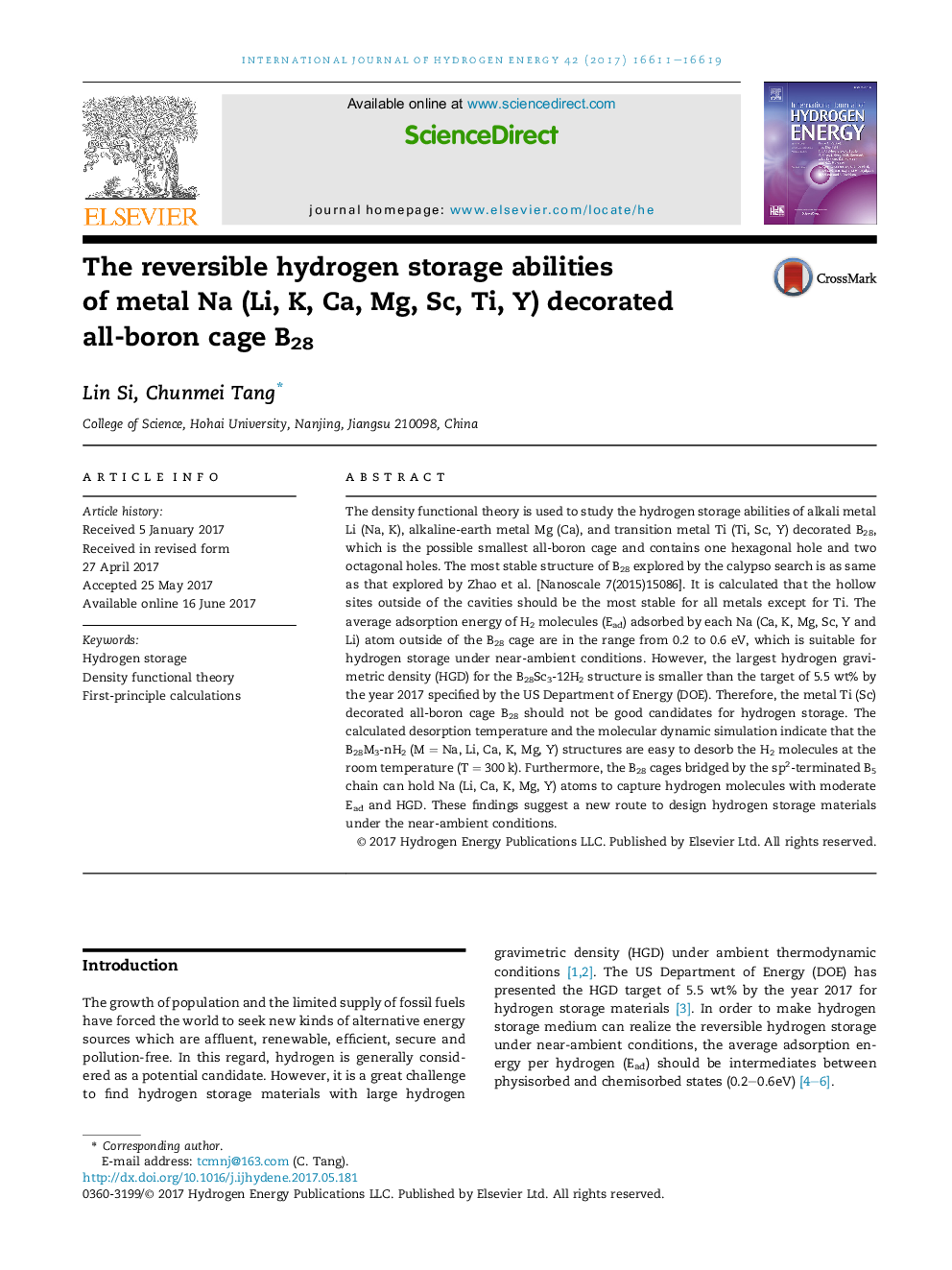| Article ID | Journal | Published Year | Pages | File Type |
|---|---|---|---|---|
| 5146422 | International Journal of Hydrogen Energy | 2017 | 9 Pages |
Abstract
265It is calculated that the hollow sites outside of the cavities of the all-boron B28 cage are the most stable for the metals. The average adsorption energies for H2 molecules adsorbed by each Na (Ca, K, Mg, Sc, Y and Li) atom outside of the surface of B28 are in the range from 0.2 to 0.6Â eV, which is suitable for hydrogen storage under near-ambient conditions. It is known from the consecutive adsorption energy that each Na (Ca, K, Mg, Sc, Y and Li) atom at the hollow sites outside the hexagonal ring can adsorb 6 (5, 5, 4, 4, 6 and 4) H2 molecules, while those posited at the hollow sites outside of the octagonal ring can adsorb 5 (5, 4, 4, 4, 6 and 4) H2 molecules. The hydrogen gravimetric densities of these hydrogen adsorbed structures exceeds the 5.5Â wt% by the year 2017 specified by the US department of energy (DOE) except for B28Sc3 structure. The calculated desorption temperature and the molecular dynamic simulation indicate that these structures are easier to desorb the H2 molecules under near-ambient conditions. Therefore, the stable metal decorated all-boron cage B28 are good candidates for hydrogen storage. These findings suggest a new route to design hydrogen storage materials under the near-ambient conditions.
Related Topics
Physical Sciences and Engineering
Chemistry
Electrochemistry
Authors
Lin Si, Chunmei Tang,
